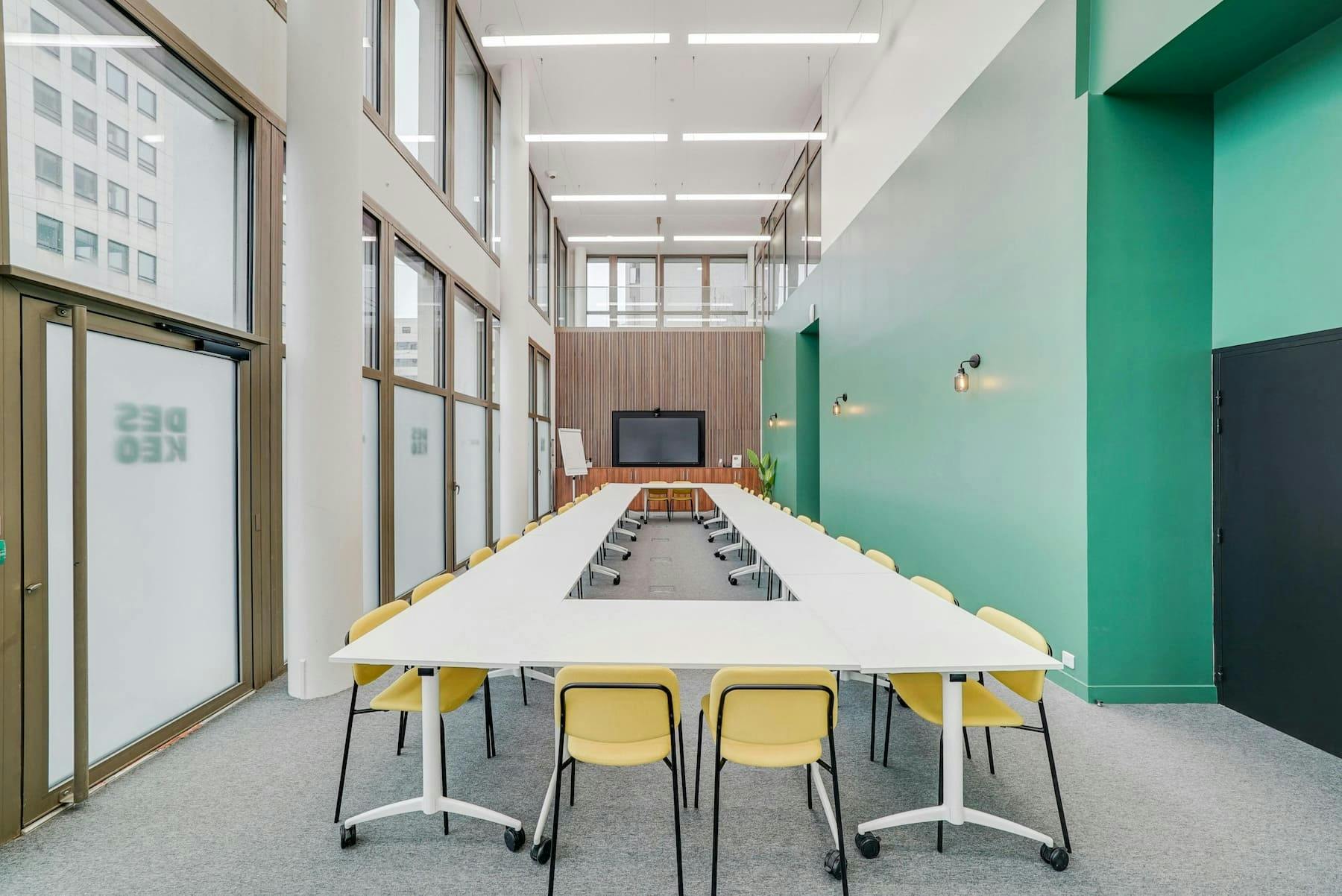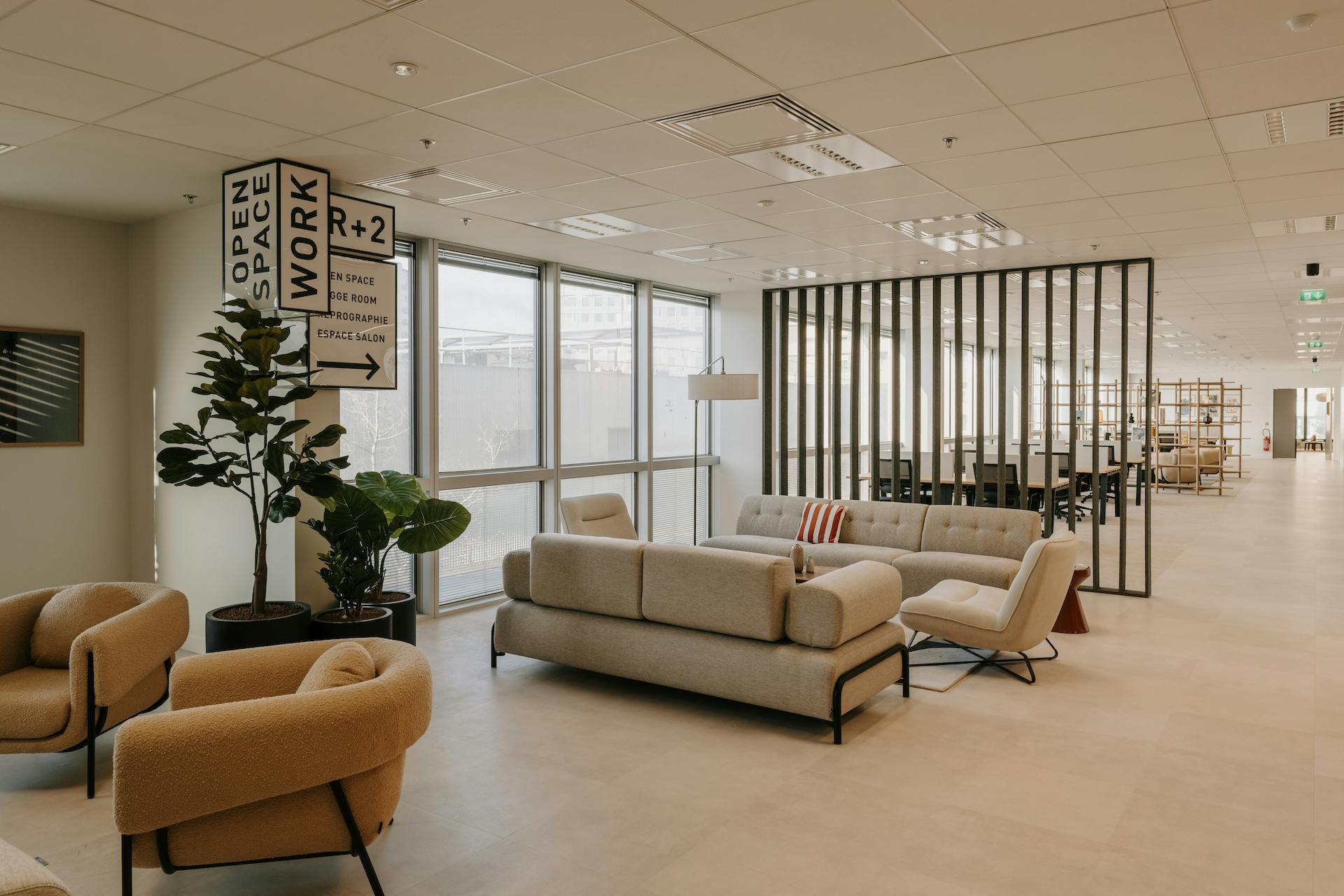

How to create a motivating, collaborative workspace for your employees?
Nowadays, work extends far beyond merely completing tasks. Employees seek an environment that motivates them and gives purpose to their professional lives. In this context, creating a collaborative and motivating workspace has become an absolute priority for companies eager to cultivate productivity, creativity, and team well-being.
But how to achieve this delicate balance where everyone feels both encouraged and supported in their efforts? This crucial question lies at the heart of our reflection. In this article, we will delve into this issue to provide you with concrete answers and practical advice.
Definition and challenges of collaborative work
Collaboration in the modern era
Have you also noticed? In recent years, technological advancements have profoundly altered our daily lives, and the way we work in businesses has evolved as well. Gone are the days when teamwork was confined within the walls of physical offices! Today, thanks to digital platforms, teams can cooperate effectively, regardless of their location.
Let's acknowledge it: the evolution of collaborative work is captivating, particularly with the emergence of online communication and collaboration tools. These new tools have truly revolutionized our way of interacting at work. Exchanges have become instantaneous, virtual meetings have become commonplace, and remote project management is more efficient than ever.
In this context, collaboration goes far beyond simple cooperation among colleagues. It's a dynamic exchange of ideas, skills, and resources within a group. It fosters the establishment of a corporate culture based on knowledge sharing and collective problem-solving. In other words, companies that encourage this type of environment are better equipped to tackle the challenges of the modern world and seize the opportunities that come their way.
Advantages of a Collaborative Workspace
The benefits of a collaborative workspace are manifold, and their impact is felt at various levels within a company.
- Increased productivity: Collaboration brings together ideas, skills, and resources, stimulating creativity and accelerating project completion.
- Improved communication: A collaborative workspace fosters transparent exchanges among team members, facilitating problem-solving and preventing misunderstandings.
- Enhanced team cohesion: Collaborating on common projects strengthens bonds among team members and creates a sense of belonging and mutual support.
- Accelerated communication: Online collaboration tools like instant messaging and virtual meetings enable rapid and efficient communication, regardless of team members' locations.
Designing a Collaborative Space
Principles of a Collaboration-Friendly Layout
If you want to succeed in designing your collaborative workspace, several key elements come into play.
Firstly, open areas promote circulation and interactions among team members. These spaces allow collaborators to move freely, meet spontaneously, and exchange ideas informally.
On the other hand, relaxation areas play an important role in creating an environment conducive to collaboration. These zones invite team members to relax, take breaks, and socialize, fostering informal exchanges and strengthening bonds among colleagues.
Finally, modular meeting rooms are essential to meet teams' diverse needs. These versatile spaces can be configured in different ways depending on specific meeting, training, or group work requirements. They offer the flexibility needed to adapt to various collaboration activities.
Essential Tools for Remote Collaboration
Take the example of Slack, a widely praised platform for its user-friendliness and effectiveness. With its intuitive interface, it allows team members to communicate instantly, create thematic discussion channels, and securely share files. Similarly, file sharing via services like Google Drive or Dropbox facilitates collaboration by enabling everyone to quickly access necessary documents and edit them in real-time.
Most companies have already adopted this practice, but if you haven't yet, you can set up a shared calendar using apps like Google Calendar or Microsoft Outlook. This solution facilitates meeting and event planning and ensures better schedule coordination.
Furthermore, don't hesitate to use task tracking tools such as Trello, Asana, or Monday.com. These platforms allow team members to track project progress, assign responsibilities, and meet deadlines, ensuring effective project management.
With these tools, collaboration becomes smoother, more responsive, and more efficient than ever!
Choosing Suitable Furniture
Choosing the right furniture is crucial to establishing a workspace conducive to collaboration. Opting for ergonomic and flexible furniture is not only essential for employees' well-being and productivity but also for creating an environment that inspires creativity and efficiency.
Imagine chairs that perfectly adapt to your posture, height-adjustable desks for optimal comfort, and lumbar supports that preserve your long-term health. This is what ergonomic furniture enables, providing valuable support against musculoskeletal disorders while promoting correct posture.
Moreover, with modular furniture, flexibility becomes the norm. Mobile tables and chairs, adaptable partitions, and versatile storage spaces make it easy to adjust the workspace according to the team's changing needs. This is key to creating a dynamic environment that adapts to different tasks and preferences of collaborators.
Keep in mind that investing in ergonomic and modular furniture demonstrates a commitment to employee well-being while fostering a stimulating and adaptable work environment.
Desk Booking and Space Management
Optimizing Space Utilization
The desk booking system offers an innovative solution to optimize workspace usage and promote flexibility within organizations. Desk booking allows employees to reserve workstations or desks they need for a specified period.
With this system, companies can better manage the fluctuating demand for workspace by allowing employees to book a desk when needed while freeing up these spaces when not in use. This optimizes resource utilization and reduces space waste, which is particularly beneficial in work environments where resources are limited.
Furthermore, desk booking promotes flexibility by allowing employees to choose where they want to work based on their needs and preferences. Whether in a traditional office, a coworking space, or even remote work, employees have the opportunity to find the work environment that best suits their needs and current tasks.
Reservation Systems and Tools
Today, there is a variety of reservation systems and tools designed to facilitate workspace and meeting room management within companies. These tools offer various features, ranging from simple desk reservations to advanced management of meeting rooms and associated equipment.
Some reservation systems are integrated into human resources management software, allowing centralized and simplified workspace management. Others are standalone applications accessible from computers, smartphones, or tablets.
Among the features provided by these reservation systems are real-time space availability visualization, booking of meeting rooms equipped with audiovisual equipment, management of reservation requests, and sending notifications to users to confirm their bookings.
Company Culture and Collaborative Space
In a company's life, a well-thought-out workspace can make all the difference. Think of a place where every detail, from decoration to furniture choice, truly reflects the soul and values of the company. It is in this environment that employees truly feel involved and motivated.
For example, inviting relaxation areas can become real sources of inspiration, conducive to creativity and innovation. And what's better than an open collaboration area to encourage exchanges and teamwork? This is where ideas flow, and projects take shape.
A well-designed workspace can be the very reflection of the company's identity. Walls adorned with past achievements, inspiring photos, or motivating quotes remind everyone of common goals and reinforce a sense of belonging to the same team. For your workspace design project, feel free to reach out to Deskeo; our team will be delighted to assist you!

Contact Us
We find your Perfect fit!

